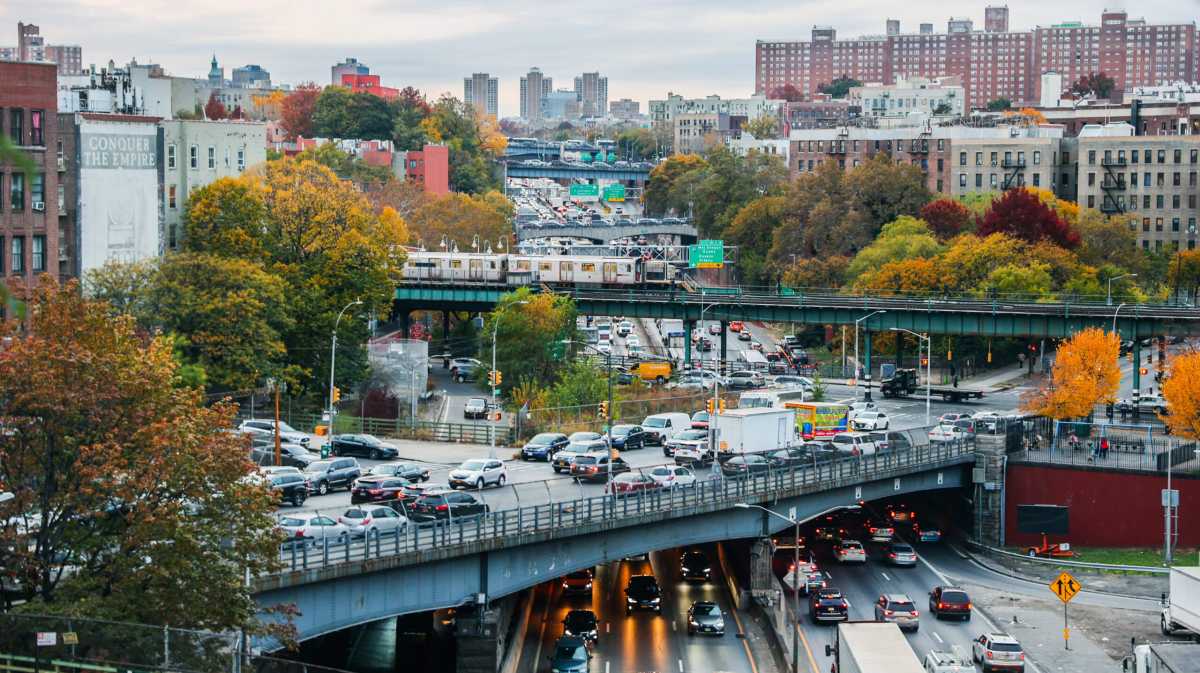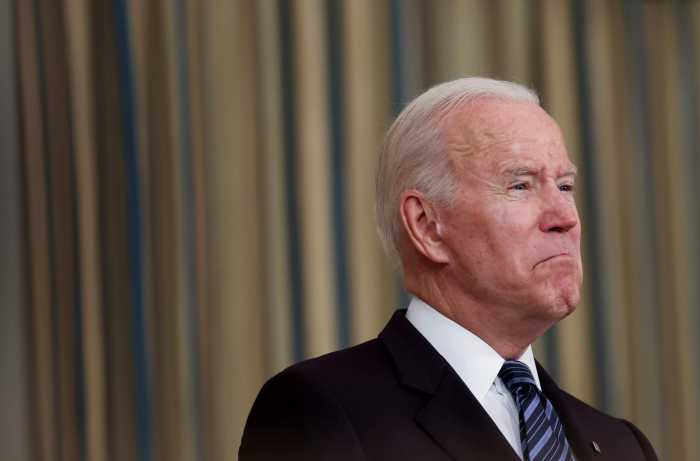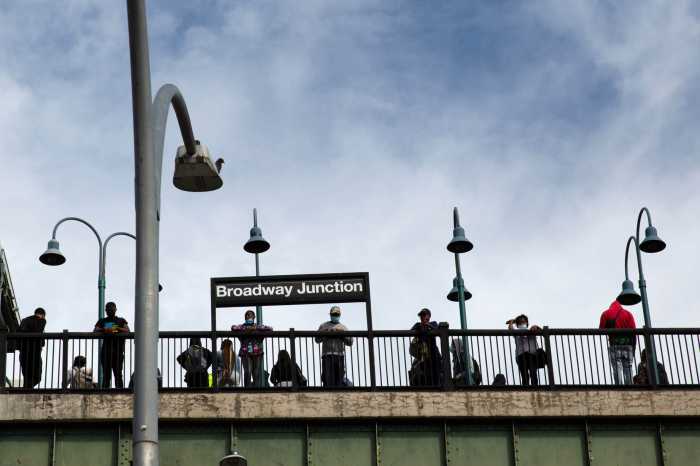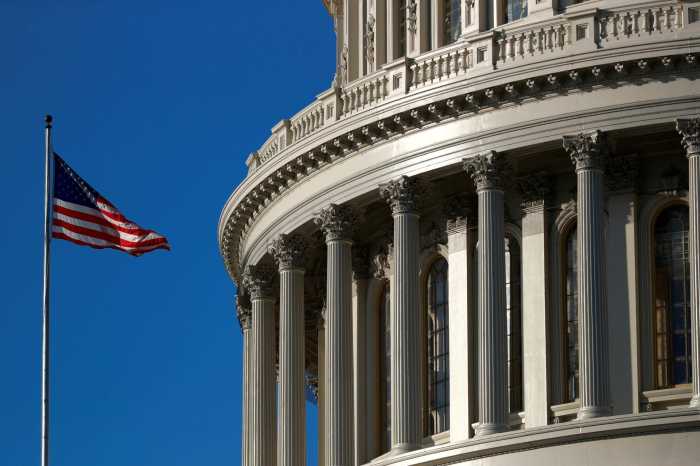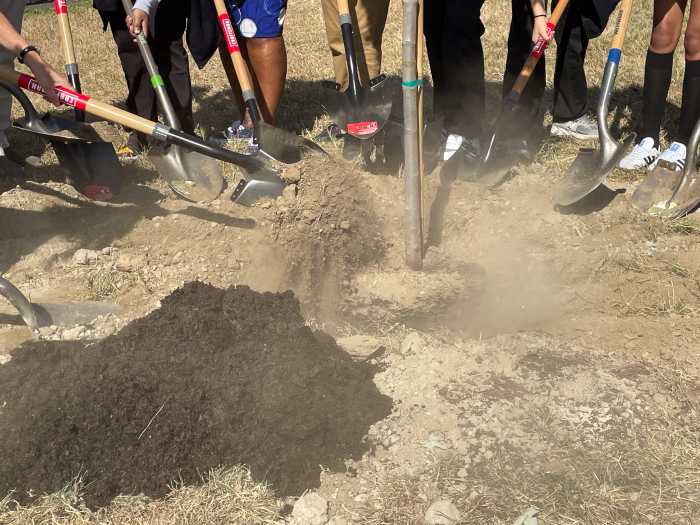The passage of President Joe Biden’s $1.2 trillion infrastructure bill in Washington last week sparked a flurry of pushes to address the degradation and division caused by New York City’s urban highways.
The bill includes a $1 billion pilot program to reconnect communities divided by transportation infrastructure, and Big Apple leaders seized on the moment to put the city’s highways center.
Senate Majority Leader Chuck Schumer joined a rally on Nov. 9 demanding officials cap over a section of the Cross Bronx Expressway and build a park on top of it.
The next day, influential building industry honcho Carlo Scissura went on a screed against the Brooklyn-Queens Expressway, saying it must be torn down and replaced it with a tunnel.
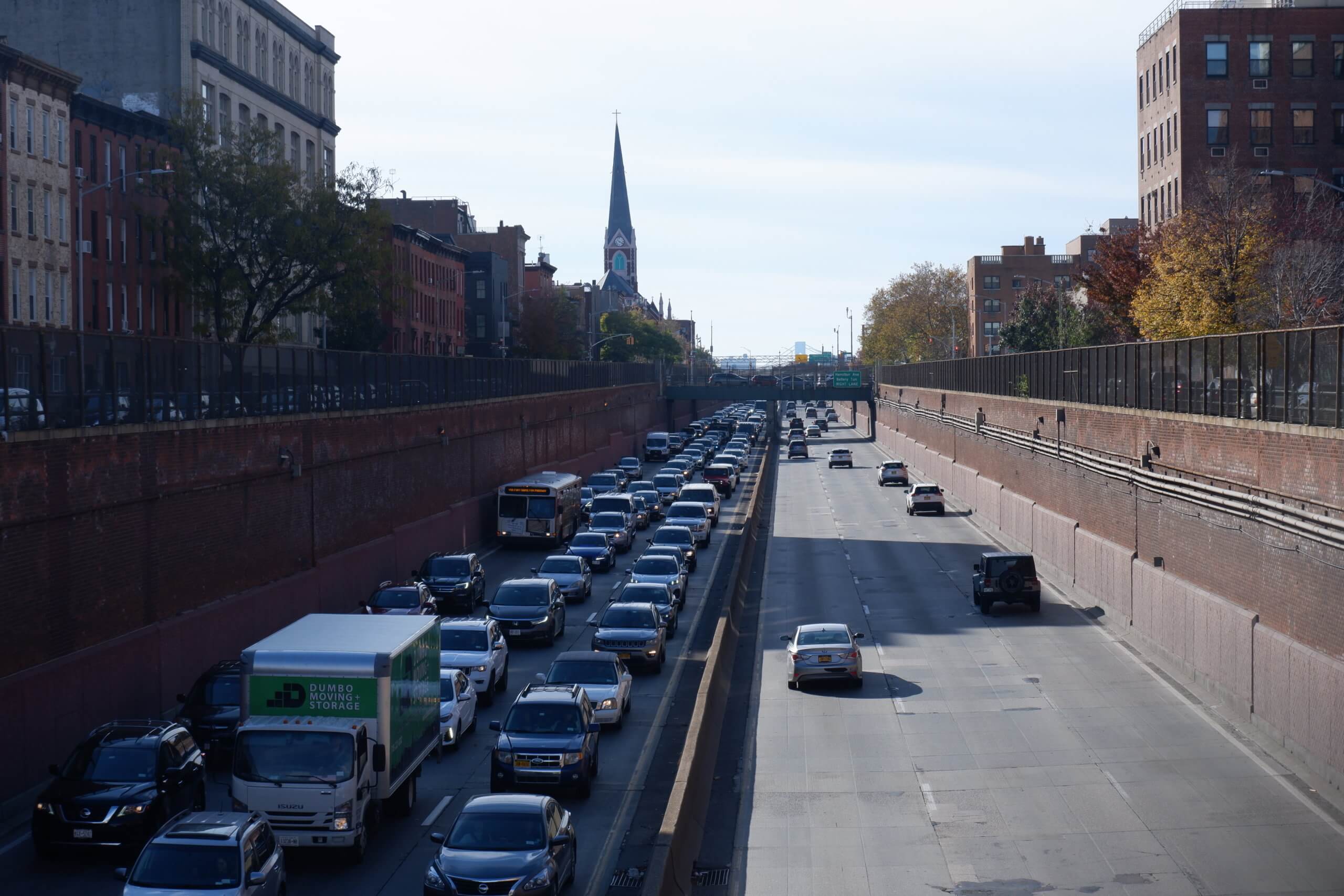
Government officials and engineers have been scratching their heads for years about what to do with the BQE in particular, whose triple-cantilever section wrapping around Brooklyn Heights has been decaying rapidly.
Now, experts say the federal money will direct renewed focus toward these roadways that have separated neighborhoods for decades.
“It’s a good step forward and certainly could allow new ideas and new approaches to get new attention,” said Kate Slevin, executive vice president of the non-profit Regional Plan Association. “It shows the federal government’s interest and intention in addressing some of the longstanding historical inequities and environmental degradation from construction of these highways.”
Reconnecting
The infrastructure package — officially dubbed the Infrastructure Investment and Jobs Act and expected to be signed into law by Biden Monday, Nov. 15 — includes $550 million of new spending across five years.
Part of that is the so-called Reconnecting Communities Pilot Program, which was originally supposed to have $20 billion but was whittled down to $1 billion during Senate negotiations.
The scheme targets facilities like highways or viaducts that are a “barrier to community connectivity,” according to the bill text and the feds will fund efforts to “remove, retrofit, or mitigate” such structures.
Many of these highways were built through working class neighborhoods during the 20th century, especially in communities of color, noted Transportation Secretary Pete Buttigieg last week.
Transportation @SecretaryPete: " If an underpass was constructed such that a bus carrying mostly Black and Puerto Rican kids to a beach, […] in New York was designed too low for it to pass by, that that obviously reflects racism that went into those design choices." pic.twitter.com/0XWkDZehYM
— The Hill (@thehill) November 8, 2021
Applicants for the program can get a grant of up to $2 million for planning and $5 million for construction if their proposal has already been fleshed out, according to the bill text.
The US Department of Transportation claims the money will be able to reconnect as many as 20 communities by taking down sections of interstates, redesigning rural main streets, and repurposing former rail lines.
Deputy Secretary Polly Trottenberg — formerly New York City’s DOT commissioner — said during a Nov. 9 conference call with reporters that the program and other funds and grants would launch over the coming six months.
“In the next six months you’ll start to see some exciting news about how we’re bringing the plan to life,” Trottenberg said. “Programs like Reconnecting Communities are gonna be high priorities.”
Finding more funds
The $1 billion for the program alone is not going to cut it, however, noted transit aficionados, as one project DOT referenced to redesign the I-81 in Syracuse will cost twice that by itself.
A New York City Council proposal from February 2020 to bore a tunnel to replace parts of the BQE from Gowanus to South Williamsburg was estimated to cost as much as $11 billion.
“Most of this funding is a small piece of the action,” said Jon Orcutt, a former director of policy at the city DOT under then-Mayor Michael Bloomberg who now is the director of advocacy at the group Bike New York.
The larger pots will come from so-called formula funding, recurring federal money distributed to states for highways, bridges, and tunnels, along with other competitive grants.
A whopping $110 billion is set to go toward roads, bridges, and major projects, and RPA estimates the Empire State will get some $11.6 billion for highways and another $1.9 billion for bridges.
“The biggest chunk of cash coming to the New York region is for highways and there’s a lot of flexibility on how that could be spent,” said Slevin of RPA. “It’s largely going to be up to the states to figure out how to spend that money.”
Biden’s stalled social spending plan known as Build Back Better could also unlock more funds in the future, Slevin said.
The Cross Bronx Expressway proposal is likely going to be cheaper, because any plan for the BQE will have to also address the triple-cantilever, according to an engineering consultant.
“The Cross Bronx is a less expensive endeavor because it involves capping a trench and you don’t have to tear it down,” said Matthew Carmody of the firm AKRF.
Tough task
The 1.5-mile crumbling section of the BQE was originally supposed to become structurally unsafe by 2025, but additional maintenance and weight control measures could extend its life until 2040, according to Mayor Bill de Blasio.
Fixes for the 70-year-old tiered structure have been studied at length since at least 2006, when the State DOT began planning to replace the structure, before abruptly suspending its project in 2011.
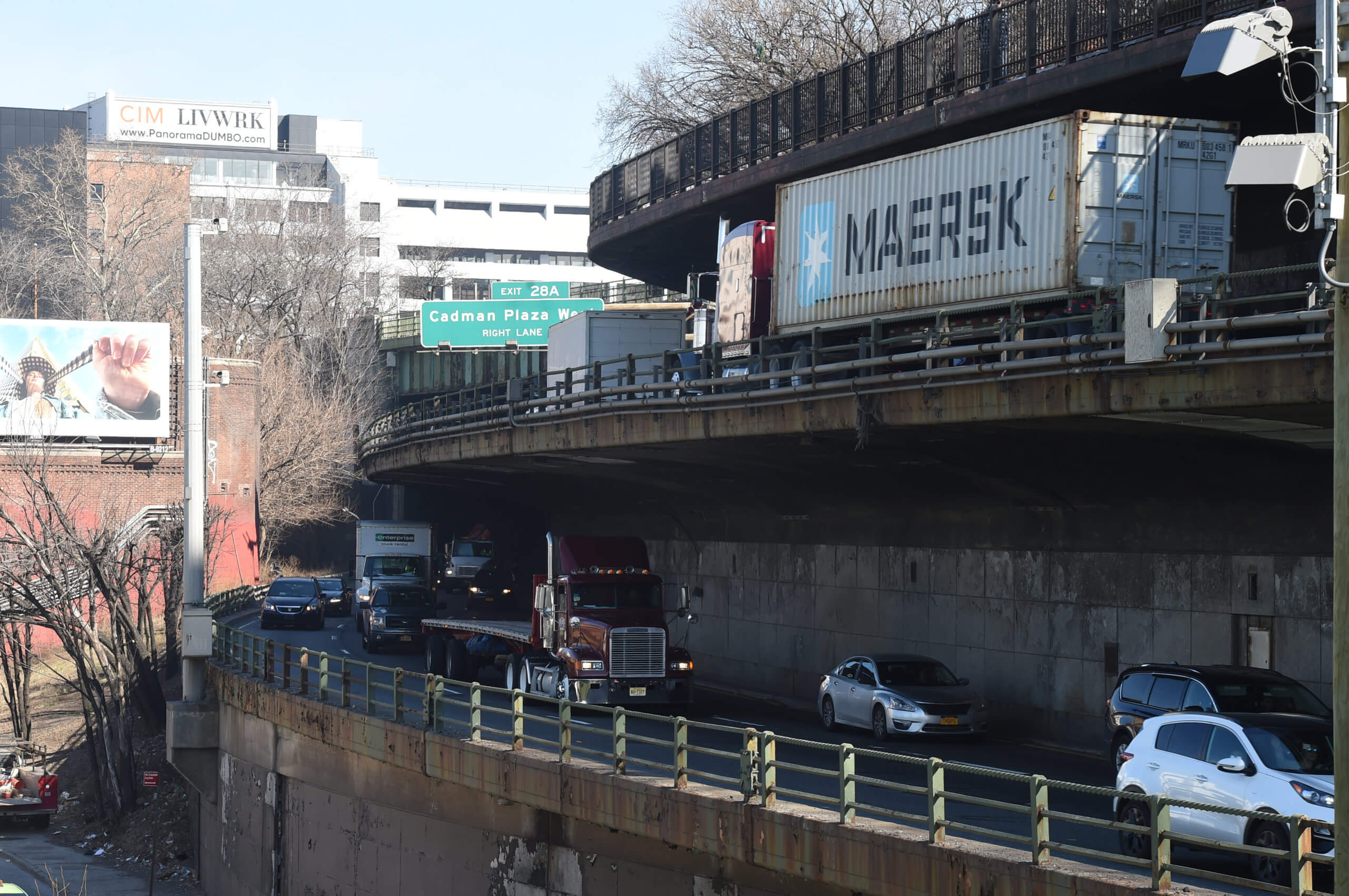
State officials lost interest afterward and the city DOT took over, but its proposal to build a temporary highway on top of the triple cantilever’s upper deck, which serves as a scenic pedestrian promenade, was shot down by residents.
“The [Governor Andrew] Cuomo administration kind of dumped it on the city,” said Orcutt. “I don’t even know how the city ended up with it. The state has really responsibility for the interstates.”
Officials have convened three panels to study fixes for the roadway in the last 15 years, one in 2006 by NYS DOT, another in 2015 by NYC DOT, and a third in 2019 by Mayor de Blasio.
De Blasio’s so-called expert panel noted that 150,000 vehicles cross the I-278 daily, including 15,000 trucks making it a critical corridor for freight.
Orcutt said the city must bring the state back in and gather a world-class team, drawing on experiences from similar projects around the country and the globe.
Examples include the tearing down of the Sheridan Expressway in the Bronx and turning it into a boulevard in 2019; the demolition of the Alaskan Way Viaduct in Seattle that year, where traffic reportedly “just disappeared,”; or the removal of the Embarcadero Freeway in San Francisco after the devastating 1989 Loma Prieta earthquake severely damaged the structure.
Or take the Cheonggye Expressway in Seoul, South Korea, being transformed into a public park and stream, and Paris where the local mayor repurposed major roadways into bike and pedestrian spaces during the COVID-19 pandemic.
“There’s a lot of examples you can draw on what happened to the traffic, people do actually have answers about that,” he said.



